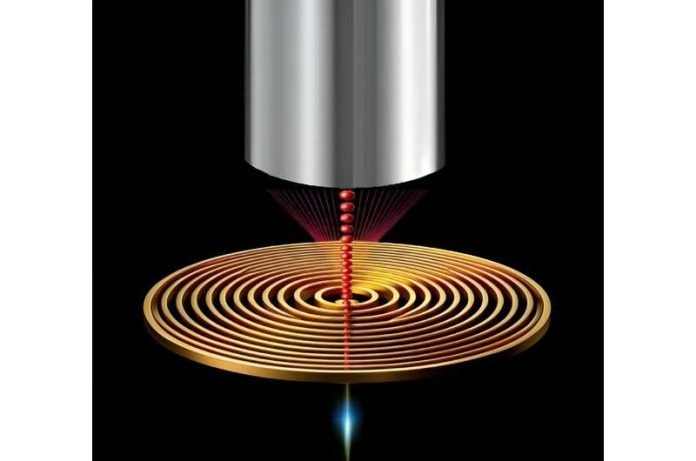
In a landmark study, researchers have made a crucial breakthrough in quantum photonics, creating a pathway for integrating single-photon sources on chips at room temperature.
This development is a giant stride in the realm of quantum computing, cryptography, and sensing, promising to bring the futuristic applications of quantum technologies into today’s world.
The innovation at the heart of this advancement is a hybrid metal–dielectric bullseye antenna. This sophisticated design achieves unmatched photon directionality, a critical feature for efficient photon management.
By positioning the emitter within a subwavelength hole at the antenna’s center, the team has enabled a dual functionality: direct back-excitation of photons and their efficient coupling into optical systems with minimal requirements for additional optics.
Devices utilizing colloidal quantum dots and nanodiamonds with silicon-vacancy centers were demonstrated, showcasing the approach’s versatility.
These materials are prized for their ability to emit single photons even at ambient temperatures, a necessary condition for practical quantum devices.
Through precise nanopositioning techniques, the researchers achieved impressive front collection efficiencies—around 70%—with minimal optical components, illustrating the potential for straightforward integration into quantum systems.
Published in Nano Letters, the study, led by Boaz Lubotzky during his Ph.D. research under the guidance of Prof. Ronen Rapaport at The Hebrew University of Jerusalem, marks a significant leap towards the on-chip integration of quantum light sources.
The collaboration extended across borders, including contributions from teams at Los Alamos National Laboratory and Ulm University in Germany.
Lubotzky heralded this achievement as a crucial step in overcoming the longstanding challenges of integrating single-photon sources with quantum systems.
This breakthrough simplifies the path toward deploying quantum technologies in various applications, from ultra-secure communication networks to enhanced sensing devices.
By bringing single-photon sources to chips that operate efficiently at room temperature, the research paves the way for the next generation of quantum devices.
These advancements are not just theoretical; they hold the promise of practical applications that could revolutionize how we compute, communicate, and sense the world around us.
The implications for quantum cryptography are particularly exciting, offering the prospect of virtually unbreakable encryption for secure communications.
Similarly, the integration of these advanced photon sources into quantum computing and sensing devices could significantly accelerate the development of commercial quantum technologies, making the once-distant dream of a quantum future a tangible reality.
The research findings can be found in Nano Letters.
Copyright © 2024 Knowridge Science Report. All rights reserved.



